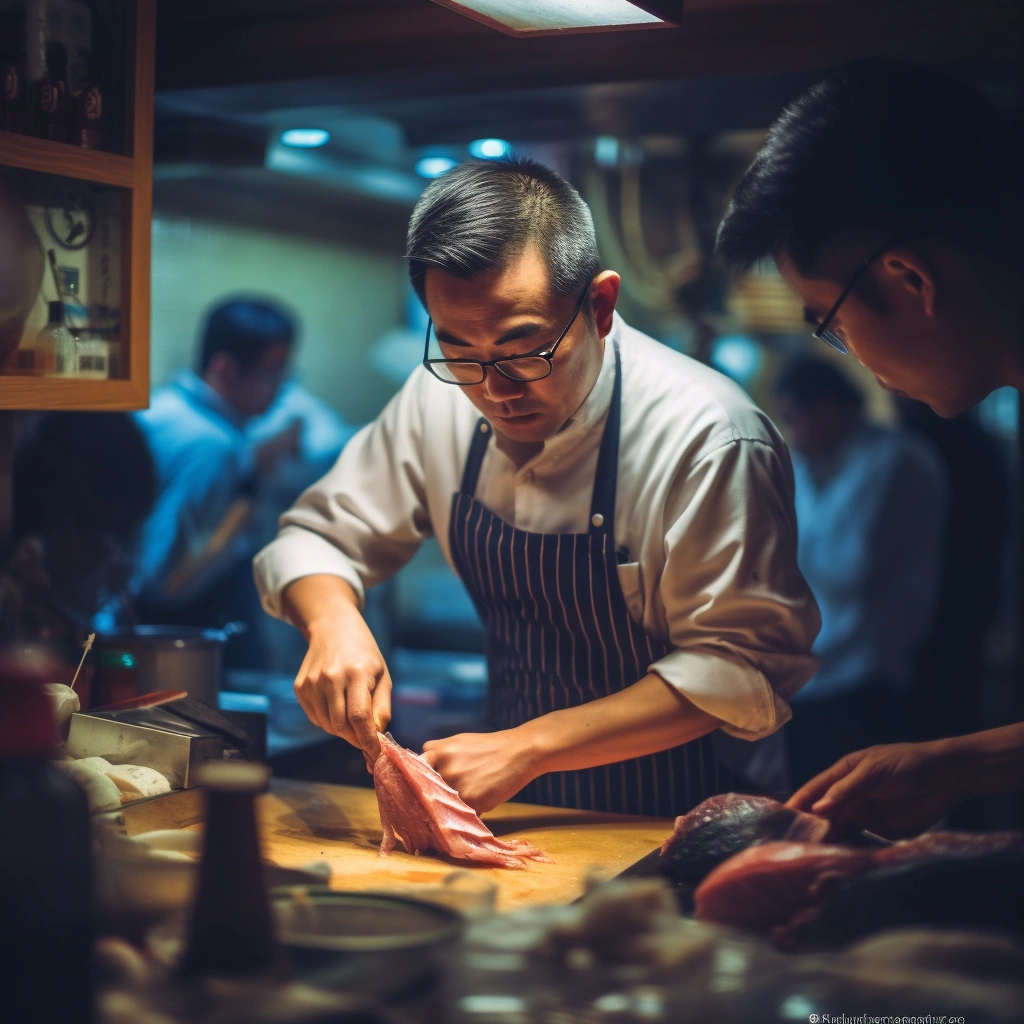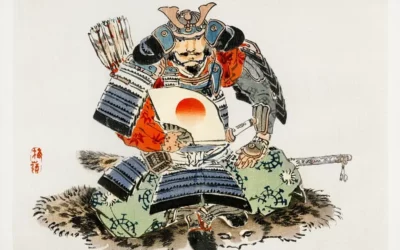Setting Sail: Unraveling the Different Tuna Varieties in Japan
Imagine yourself in Japan, a land embraced by the sea, bursting with an infectious passion for seafood. Among the seafood cornucopia, bluefin tuna, in particular, strikes a chord. You’ve probably seen it gracing sushi menus worldwide, admired for the quality of its meat, especially in its raw, sashimi or sushi form. Today, we’ll embark on a journey, unraveling the different avatars of tuna in Japan, specifically introducing you to akami, chutoro, otoro, and toro tuna.
A Deep Dive into the Most Common Cuts of Tuna
The Ruby of the Sea: Akami Tuna (赤身)
Akami, a familiar face in the sushi and sashimi world, takes the crown as the most common cut of tuna. Distanced from the fatty belly, this segment boasts rich red meat with a low fat content and a firm texture. Its name, “Akami,” translates to “red meat” in Japanese, aptly named for its deep ruby hue.
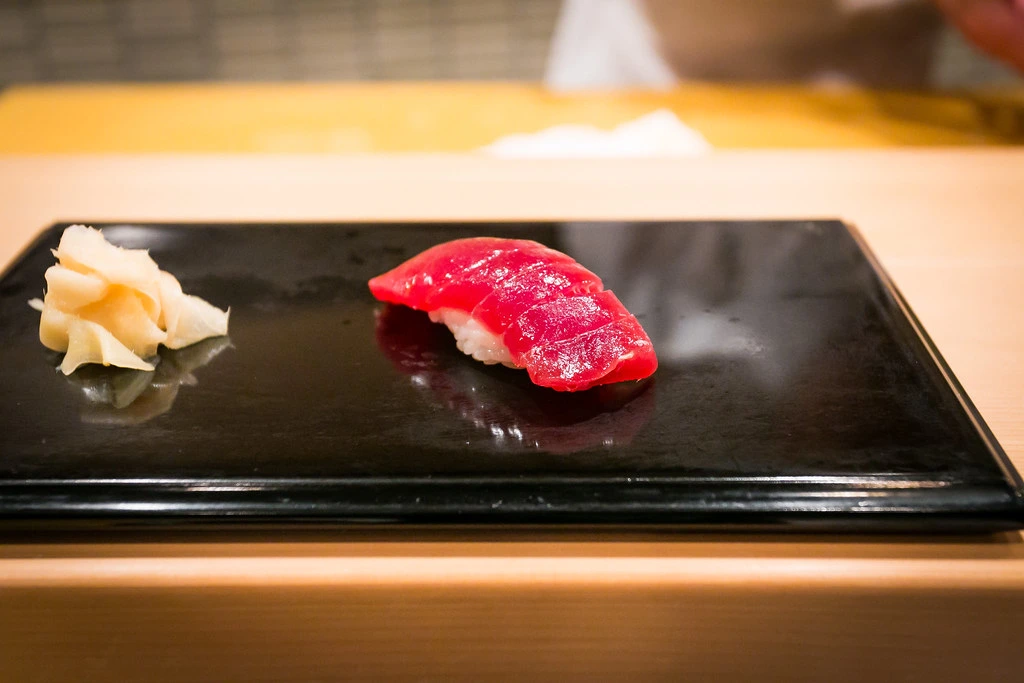
The charm of Akami tuna lies in its meaty taste. While it’s leaner than its counterparts, it certainly doesn’t hold back on delivering a scrumptious experience. Its firm texture and clean, authentic flavor make it a go-to ingredient in traditional sushi and sashimi, where the true essence of the fish takes center stage.
A Celebration of Finesse: Toro Tuna (トロ)
Toro, also known as bluefin toro, is a term that encapsulates the fatty segments of the tuna found in the belly. It’s divided into two main parts: chutoro and otoro. Regardless of the type, Toro is hailed as a delicacy, renowned for its high fat content and robust flavor.
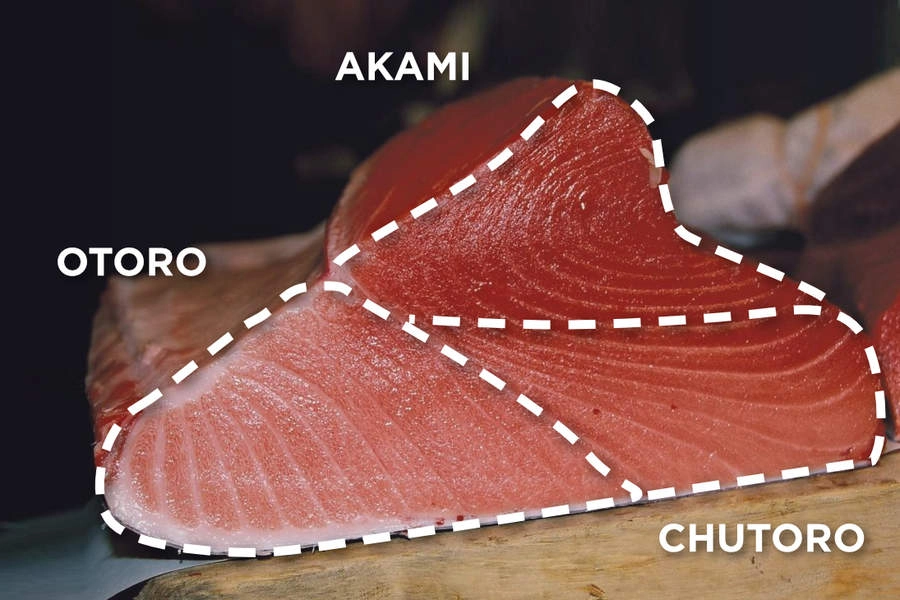
Whether you’re savoring chutoro or otoro, the experience is the same – incredibly soft, buttery, and downright indulgent. Its taste is lavish, often described as a culinary experience that melts in your mouth. The best of sushi and sashimi dishes proudly feature Toro, as its intense flavor and melt-in-your-mouth texture make it a cut above the rest.
Toro is more than just a term denoting the fatty part of the tuna found in the belly. It’s also used to grade the marbling of the tuna, akin to beef grading. The higher the marbling, the superior the quality of Toro. This marbling is the secret behind Toro’s melt-in-your-mouth texture and intense flavor.
The Hybrid Cut: Chutoro Tuna (中トロ)
Chutoro, a middle child between lean Akami and fatty Otoro, is an intriguing cut from the tuna’s belly but closer to the side. Imagine it as a beautiful blend of Akami and Otoro – the fat content rises as the cut gets closer to the belly.
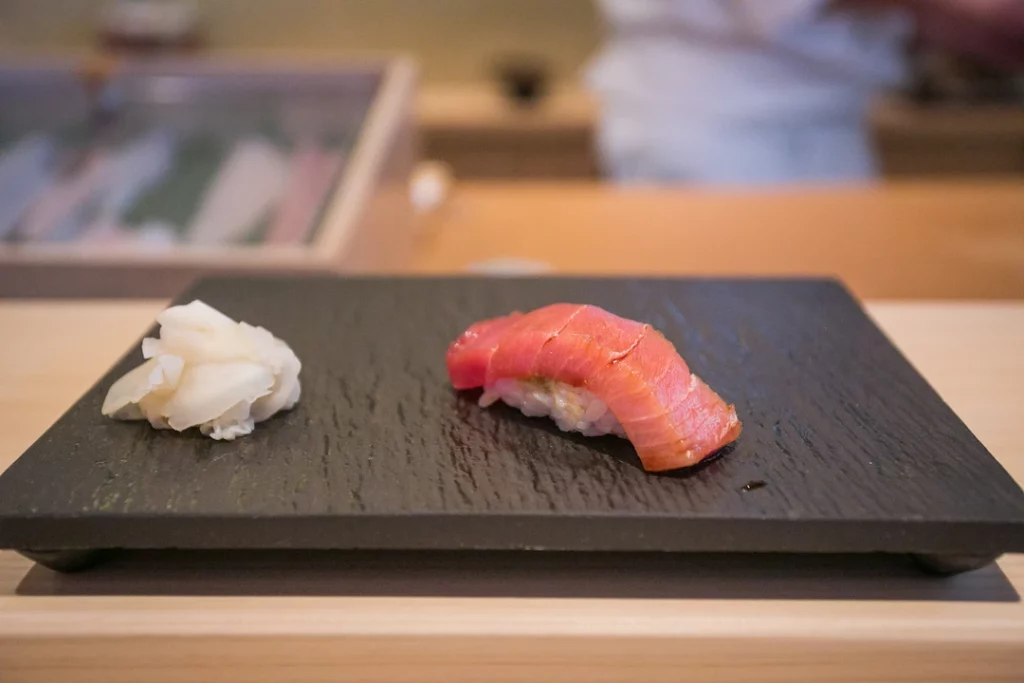
Chutoro strikes a delicate balance of flavors, fattier than Akami but leaner than Otoro. This balance gifts it a soft, buttery texture that dissolves in your mouth with a rich flavor profile. High-grade sushi and sashimi often flaunt Chutoro, showcasing its unique taste and texture.
The Premium Cut: Otoro Tuna (大トロ)
Roll out the red carpet for Otoro – the superstar cut of tuna, lauded for its high fat content and soft texture. Nestled in the belly of the tuna, Otoro is a premium cut, often making a grand appearance on special occasions.
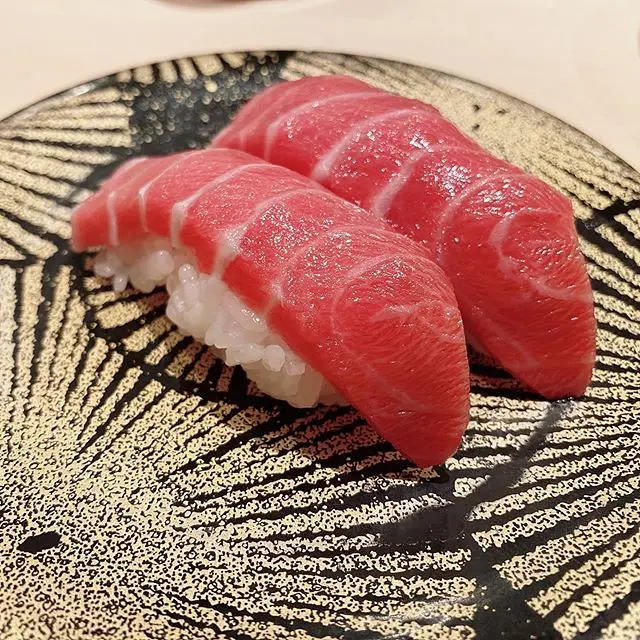
The magic of Otoro lies in its high fat content, which gives it an unmatched, rich, sweet flavor. This fatty segment of the tuna dissolves in your mouth, offering an intensely luxurious tasting adventure. It’s typically served as sushi and sashimi, letting the fatty, buttery flavor steal the show.
A Side-by-Side Comparison: Tuna Varieties at a Glance
| Cut of Tuna | Fat Content | Texture | Flavor | Best use |
|---|---|---|---|---|
| Akami | Low | Firm | Clean, Pure | Sushi, Sashimi |
| Chutoro | Medium | Soft, Buttery | Rich, Balanced | High-Grade Sushi, Sashimi |
| Otoro | High | Very Soft, Buttery | Luxurious, Rich | Premium Sushi, Sashimi |
| Toro (General) | High | Soft, Buttery | Rich, Luxurious | Top-Tier Sushi, Sashimi |
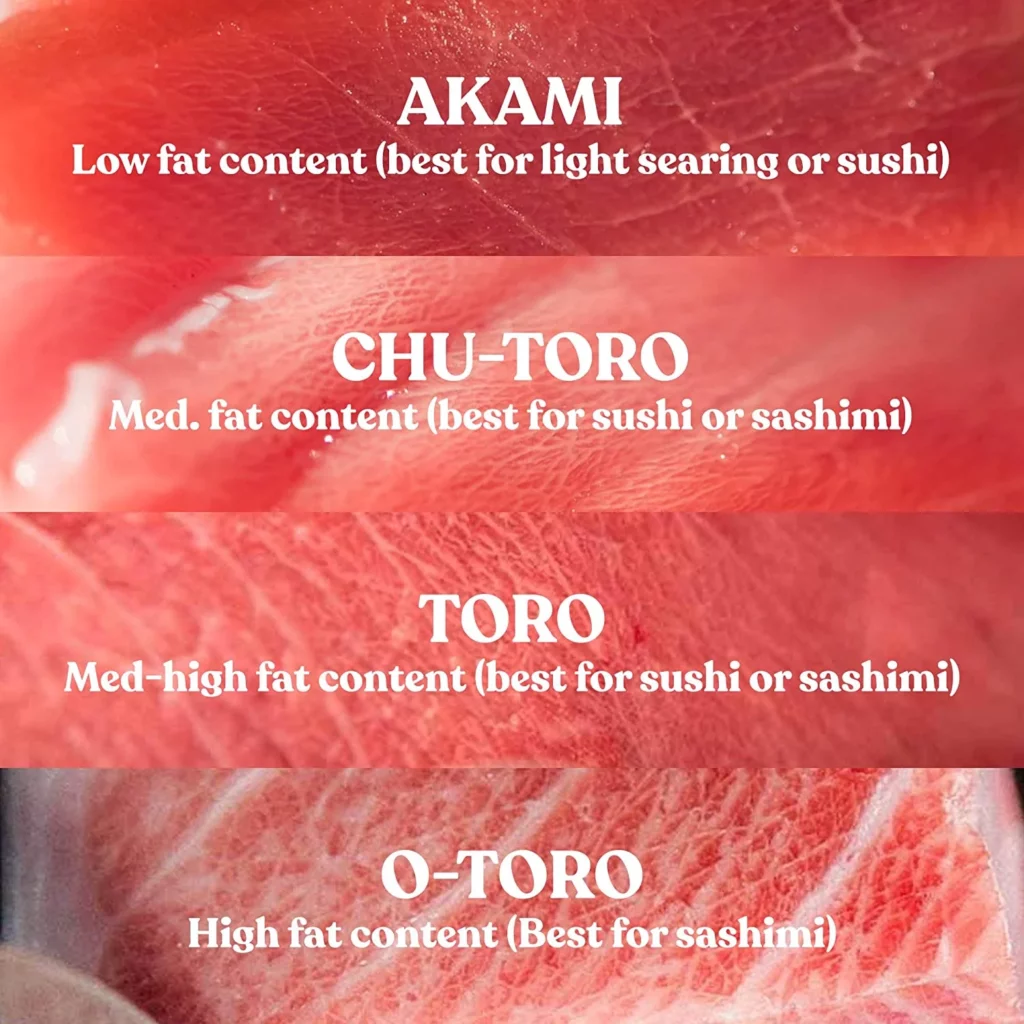
Amplifying Your Tuna Adventure: From Cooking Techniques to Serving Suggestions
The beauty of tuna is its versatility – whether you prefer raw preparations like sushi and sashimi, which spotlight the fish’s natural flavors and textures, or cooked renditions like grilled, seared, or broiled tuna, which offer a delightful deviation.
More Than Just a Feast: Nutritional Value and Sustainability Concerns
Tuna isn’t just a treat to your taste buds; it’s a nutritional powerhouse, brimming with protein and Omega-3 fatty acids. But let’s not overlook the elephant in the room: the impact of tuna fishing on the environment. Overfishing poses a significant threat to many tuna species, especially the bluefin. Making responsible choices and opting for sustainably sourced tuna can safeguard this aquatic delight for future generations.
Fun Facts
Toro tuna has been a staple in Japanese cuisine for centuries. In fact, it is believed that sushi was originally created as a way to preserve fish, including toro tuna, by fermenting it with rice vinegar and salt.
Today, toro tuna is one of the most highly prized ingredients in traditional Japanese cuisine. In addition to being a popular ingredient in sushi and sashimi dishes, toro tuna has also been used in other traditional Japanese dishes, such as tataki (seared slices of fish), akami-zuke (marinated tuna), and tekka-don (a rice bowl topped with sliced raw fish).
Record-Breaking Prices Paid for High-Quality Toro at Auctions
The high demand for toro tuna has led to some record-breaking prices at auctions. In 2019, a single bluefin tuna sold for over $3 million at the first auction of the year at Tokyo’s Tsukiji market. While this price may seem astronomical, it is not uncommon for high-quality toro to sell for thousands of dollars per pound.
The record-breaking prices are often paid by high-end sushi restaurants who are willing to pay top dollar for the best quality ingredients. These restaurants believe that using the highest quality ingredients is essential to creating an exceptional dining experience.
Unique Uses for Leftover Parts of the Fish
While toro tuna is highly prized for its rich flavor and smooth texture, there are also unique uses for leftover parts of the fish. For example, toro bones can be used to make a rich and flavorful broth that can be used as a base for soups or noodle dishes. Toro skin can also be used in various ways.
It can be deep-fried to make a crispy and flavorful appetizer, or it can be used to wrap other ingredients in sushi rolls. In addition, toro skin can be boiled and then marinated in soy sauce and sugar to create a tasty snack.
Overall, toro tuna is a versatile ingredient with a rich history and many unique uses. Whether enjoyed as part of a traditional sushi dish or used in innovative ways, toro tuna is sure to impress even the most discerning foodie.
Most popular questions about Japanese Tuna
What is the best tuna from Japan?
The best tuna from Japan is the Bluefin tuna, particularly from Oma, Aomori Prefecture.
What kind of tuna is usually in sushi?
Akami (lean red meat from the back of the tuna) and Toro (fatty belly part) are commonly used in sushi.
What is raw tuna called in Japan?
Raw tuna is called “Maguro” in Japan.
What is the highest quality tuna?
The highest quality tuna is the Bluefin tuna, especially the ones caught during winter.
What is the expensive Japan tuna?
The most expensive tuna in Japan is also the Bluefin tuna. A single fish can sell for millions of dollars at auction.
Why is Japanese tuna so expensive?
Japanese tuna is so expensive due to its high demand, overfishing, and the meticulous care taken in catching and storing the fish.
What is fatty tuna called in Japanese?
Fatty tuna is called “Toro” in Japanese.
Why do Japanese eat so much tuna?
Japanese eat so much tuna due to its cultural significance, versatility in dishes, and nutritional value.
Do Japanese eat tuna raw?
Yes, Japanese people often eat tuna raw, especially in sushi and sashimi.
Where does Japan get tuna from?
Japan gets its tuna from various sources, both domestically and internationally.
Is tuna a delicacy in Japan?
Yes, tuna, especially Bluefin tuna, is considered a delicacy in Japan.
Savoring the Experience: Wrapping Up
From the lean, unadulterated akami to the rich, buttery otoro, each cut of tuna brings its unique personality to the table in terms of taste and texture. As you dive deeper into the world of Japanese tuna cuisine, this guide is your trusty companion, helping you appreciate the richness and complexity of each slice.
While you’re here, why not discover other aspects of Japanese culture too? You might find the Japanese art of flower arranging, Ikebana, intriguing, along with the essential Ikebana tools. The different roles of Geisha, Maiko, and Oiran offer a window into Japanese social culture and history.
If Japanese pop culture floats your boat, you may enjoy exploring trendy nuggets like the Demon Slayer Tamagotchi or the Evangelion Tamagotchi. You can also delve into the culinary diversity of Japan by understanding the differences between Udon and Soba noodles.

